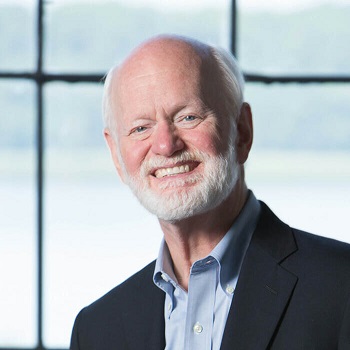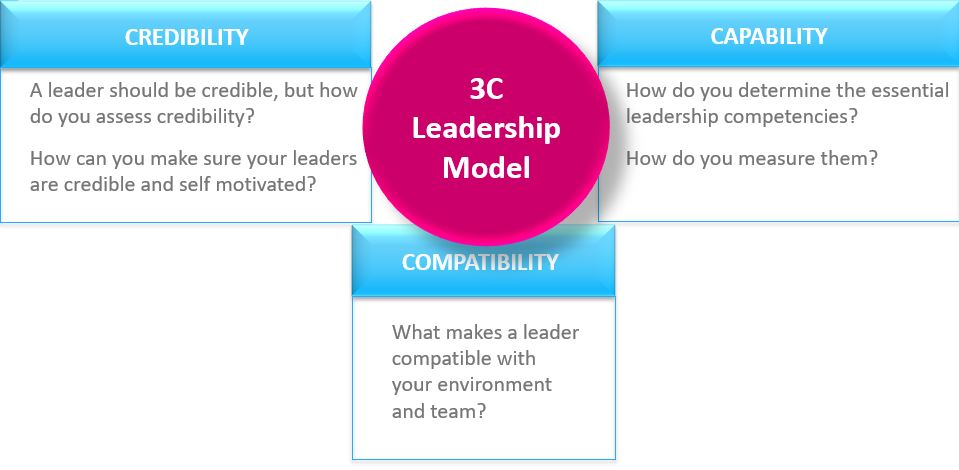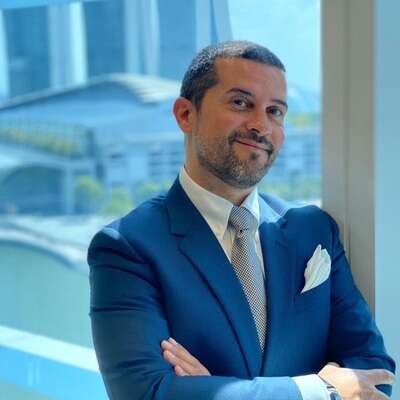An integrated approach to executive search and leadership development

Forward by:
Marshall Goldsmith
Thinkers50 #1 Executive Coach and New York Times #1 bestselling author of Triggers, Mojo, and What Got You Here Won’t Get You There.
Finding the right executive to lead your organization can be a daunting task. In my years of coaching and developing leaders to move into a C-Suite role, I have found it can be difficult to find a guide to help HR professionals and committees navigate the process. Mirko has created a guide to understanding three top qualities in a leader to look for in your searches and interviews. This article will not only help you understand what characteristics your leader will need to possess, but also what your company and team will need from the leader to succeed. This is an insightful and thoughtful read!

It's a FUN new world.
Aldous Huxley would say that we are living in a “Brave New World”.
In my opinion, the world is becoming more and more:
Fast because the cycle of innovations have become faster and faster. Think about the volume of structural change we have seen in the last 15 years: social media, artificial intelligence, e-commerce, virtual currencies have all become a reality and they have completely changed the way we live. Of course, there is also the changes that COVID-19 has brought, but those might be temporary and we have yet to see what a post-COVID world would look like.
Unpredictable because of the fast change and also because the change in the competitive landscape can come from anywhere. Companies who are not your competitors today, who are not even on your radar because they are not suppliers or clients (where new competitors might traditionally come from), become a vital threat to your organisation all of a sudden. Without veering far from my industry, I could mention LinkedIn for the Executive Search industry, but other more obvious disruptors include the E-commerce giants for any brick and mortar retailer, or Fintech companies for the financial sector.
Non-Physical because we increasingly tend to live our lives interacting exclusively in the digital space. Nowadays, we connect with our friends and family via social media and video conferencing. The uptake of digitalisation in the form of video conferencing in the business world has also spiked. Both trends were available before COVID hit us, but it had massively accelerated the digitalisation process, probably in a completely irreversible way. How many times did you visit your bank this year? When was the last time you went to a bookstore? Do you buy newspapers or read them on your Ipad? The way we interact with the world changed irrevocably.
In this FUN world, selecting the right leaders is vital for survival. I have designed a model to evaluate leaders that can be used for selection and for development. The Model is called 3C.
The 3C Leadership Model
You are a leader if you have followers.The 3C Model has been developed through working on Executive Search projects and Coaching assignments. In other words it has been developed on the field, with Executives and for Executives.

Will this person be a Leader, someone able to create a vision? Communicate in an inspiring way with the rest of the team? Win their trust and guide them in order to design and execute a strategy that guarantees sustainable business success?
The traditional approach in answering the questions above has been heavily based on the past: reputation, track record, CVs, references, competencies. However, if the world is now FUN, we also need to weigh other considerations because the past is becoming less and less reliable in predicting the future.
The 3C approach brings a future dimension, emphasising “the software” such as leadership style and the compatibility with a leadership team, because no one can fly solo in a FUN world.
Below we will try to answer all these questions

Credibility
Credability is all about two words: Trust and Image.
Inspiring trust is a mechanism that relies on the reptilian part of our brain, the famous fight or flight mechanism, described in many psychology books.
That mechanism was designed to keep us alive and, as humans are social, it also helps us decide who we can associate with.
In the old days, we would go hunting with people we trust, but in the modern day, the hunting ground has been transformed in the business arena. Now, when we say we made a killing at our pitch, thankfully, there is no violence involved, we just mean we conquered the audience.
The first step to elicit trust is Self-Awareness.
This might sound counter intuitive, because we might think that inspiring trust is all about the audience, instead it is all about us. If we know our personality, our leadership style, and our values, we will be able to deliver an authentic message and all our communications (language, tone of voice, body movements, gestures etc.) will be more credible. I have been using Personality Assessments and Leadership Assessments in order to better understand candidates’ preferred behaviour and leadership styles. One suggestion for the interview process is to ask candidates to evaluate their leadership skills and to come up with a plan to improve in selected areas. This will give a view of the candidate’s self-awareness and will open a discussion regarding their preferences when working with a team. I call the process the “software analysis”. When paired with “hardware analysis” (background, references, results) the results in evaluating the candidate’s Credibility as a Leader is greatly enhanced. Essentially the hardware analysis will get a candidate in the long list, but the software analysis will be used to determine which candidates will be shortlisted.
“If you know the enemy and know yourself, you need not fear the result of a hundred battles. If you know yourself but not the enemy, for every victory gained you will also suffer a defeat. If you know neither the enemy nor yourself, you will succumb in every battle.”
Sun Tzu, The Art of War
The second step to elicit trust is to know your audience.
Ray Dalio, in his famous book Principles, says that he has all his leaders go through personality assessments, and share the results. This allows the leadership team to better know each other, work together more effectively and trust each other more, in a self-reinforcing cycle.
If you want to select the right leaders, you need to know what kind of leaders you already have and what kind of leaders you want to hire. If we assume for a moment that the software+hardware analysis described above will allow us to know everything about a candidate, the process of evaluating Credibility will still be somehow inaccurate if you don’t have clarity regarding your leaders and your preferred leadership models. Trust is given by an audience, not by corporate communications or procedures. It is a human process, not a bureaucratic one.
When we are retained for a search, the first essential step is to discuss with the Executive Profile (EP) with the client. This is like the operating system in a computer, it affects everything else. In preparing the EP, we have in-depth discussions with some of the leaders in the organisation in order to understand their values and leadership model.
I have been suggesting clients to have their leaders go through a 360 assessment and Leadership Development Coaching in order to better understand them. Personally, I like the methodology developed by Marshall Goldsmith (Stakeholder Centered Coaching and Global Leadership Assessment) because it is not only an assessment but also a development tool where each leader has to involve stakeholders and has to commit to a leadership model (written by the leader) and area of leadership growth. The stakeholders (team leaders, subordinates, peers) are involved in the process during the 360 assessment process but also during the development of the leadership growth areas, giving what Marshall Goldsmith calls feedforward.
If we assume we have a client that has results from Personality Assessment and Leadership Development Coaching for all of their leaders, we would know:
- Leaders’ personalities at work (preferred ways of thinking, managing relationships, managing feelings)
- Leaders’ authentic leadership model (values, preferred leadership behaviours)
When we pair the Assessments and the Authentic Leadership Model we have a complete picture regarding the potential of a new leader to be successfully accepted and integrated in the leadership team.

Capability
A talent or ability that has potential for development or use.
Capability where we assess the leader’s hard skills. In the context of this article: soft skills are related to values and behaviours at work while hard skills are related to knowledge and its application in the business environment.
One part of the Executive Profile is dedicated to the competency model. We use the SHL Universal Competency Framework in order to have a broad range of competencies that are described and applicable to different business environments.
During the discussion with the clients we try to assess two elements:
- Frequency Analysis: What competencies will be needed more often?
- Essential Competencies: What are the competencies that will have more impact on the business?
Once we are able to understand how the leader will spend his time at work (Frequency Analysis) and what it takes to be successful (Essential Competencies), we are then able to assess candidates against these benchmarks. We will use the Frequency Analysis to assess how appealing a job can be for a candidate (e.g. if a job requires strong networking skills and the candidate hates and/or has never done networking, that would be a minus point). We will ask the candidate to do a Frequency Analysis for their current role and ideal role for the future, so we can assess against this benchmark. Essential Competencies will be applied during structured interviews that rely on the SHL Competency Based Interviews methodology and we will also ask the candidates to do a self assessment, so that we can evaluate. Using the tools above will help us in interviewing candidates in a structured way, starting from a clear benchmark of what the clients want. This helps in bringing science into the recruiting process, without losing the human touch and evaluation, which is always needed.
In the end the tools help, but they would be useless without a structured discussion and a professional evaluation done by a team of independent experts; and that is the value of retaining an executive search firm.

Compatibility
The ability to integrate an existing system of people, values and procedures, maintaining or improving the system overall performance.
Compatibility is probably the most important and the most underrated among the 3Cs.
The most important because you can’t train for it or develop it, the most underrated because often we are victims of the Credibility bias (“they have an excellent CV, must be good) or the Capability bias (“they have an excellent track record, so they will deliver, surely”).
Leaders’ performance is like investment trends, where the past track record is no indication of the future performance, it is all about choices made in a context of limited information, with a lot of uncertainty. In addition, leaders might perform well or less well in different environments and situations.
In order to evaluate if a leader is compatible with the organisation and the overall environment, including external stakeholders that will have an impact on their performance, we need to have a clear idea of: What values do we have in our organisation? What do we stand for? What wouldn’t we tolerate? What behaviours should the leader inspire in our people?
During my career I have tested different tools to answer the questions above and, so far, I think the best I have found is the Marshall Goldsmith Authentic Leadership Model (“ALM”). ALM allows the leader to clearly articulate, in their own words, detailing what is success, how to manage people, change, technology and how to communicate with different stakeholders.
It is an excellent tool that helps the organisation in understanding what leadership model is needed for success and the leader to understand what kind of leader they want to be.
Using the ALM, the job of the executive search professional is easier, because there is a benchmark and there are themes that can be further explored and developed with all candidates, maintaining a framework that ensures consistency and alignment with what the client needs.

Conclusions
I would like to conclude with the question that shall be asked at the beginning. Every organisation who want to hire or promote a new leader shall keep in mind that there will be a change and there will be work required to identify and integrate this new leader, hence before starting, there is a basic question (adapted from Marshall Goldsmith book “Triggers”) that needs to be answered : "Are we willing to commit our time, our resources and our minds to enable the new leader to make a positive difference?”
If the answer is Yes, positive outcomes will be possible, if the answer is No, it would be best to wait until the right time comes.




